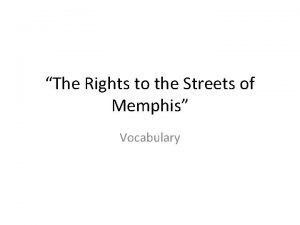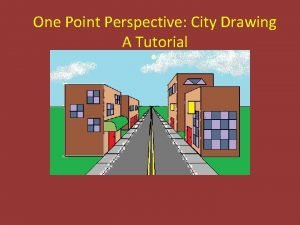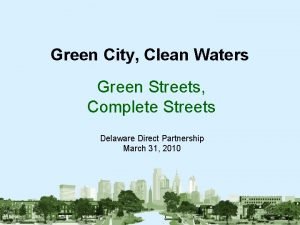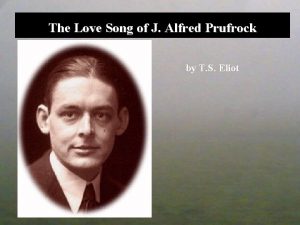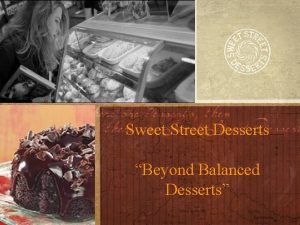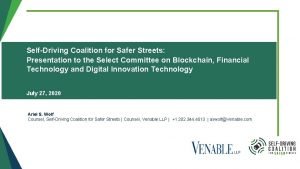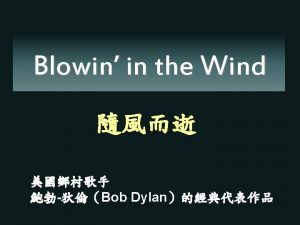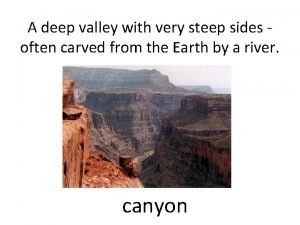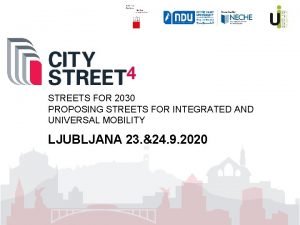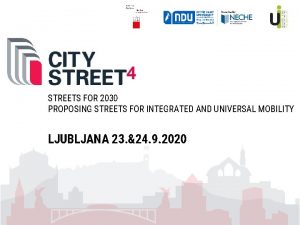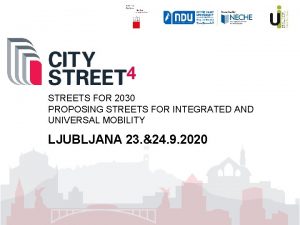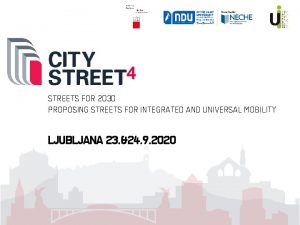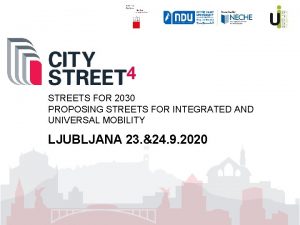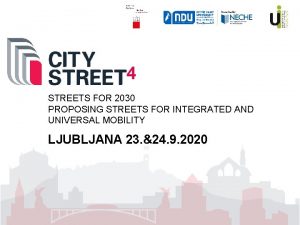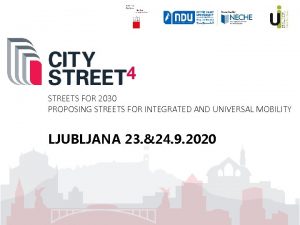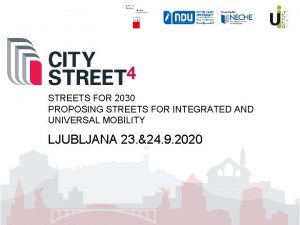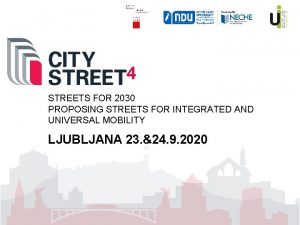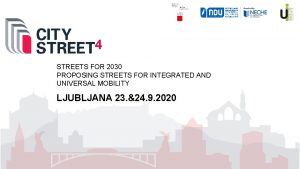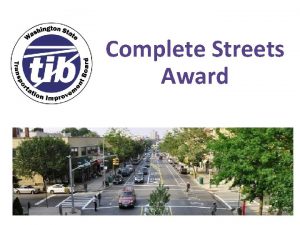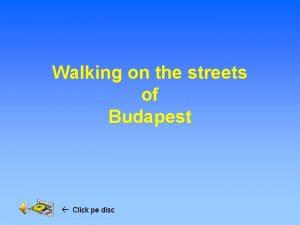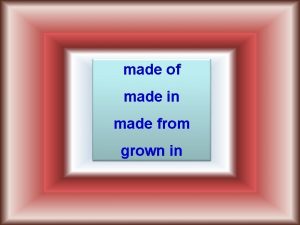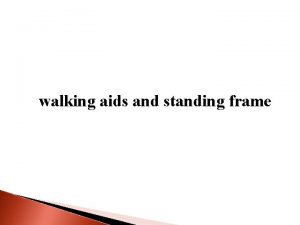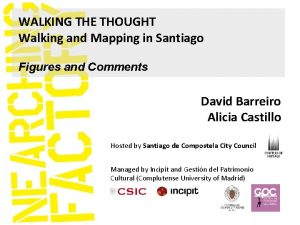Are these streets made for walking Walking and


















- Slides: 18

Are these streets made for walking? Walking and the built environment in four California regions Carole Turley Voulgaris Evelyn Blumenberg Madeline Brozen Institute of Transportation Studies, UCLA Luskin School of Public Affairs Kate Bridges Steer Davies Gleave

Agenda • Research question and study area • Describing the built environment • Modeling effects of the built environment • Conclusions

RESEARCH QUESTION AND STUDY AREA

“Walkability” as a Planning Objective

Study Area 16% 14% 12% 10% 8% 6% 4% 2% 13% n D ie go 7% Sa en to 5% am cr Sa Ar y Ba An ge le s ea 9% 0% Lo s Walking mode share of trips 4 California Metropolitan Areas

DESCRIBING THE BUILT ENVIRONMENT

Walk. Score® Non-walk trip origins Walk-trip origins • Proprietary point-based score; ranges from 1 to 100 90 Average score 80 70 60 50 40 30 69 54 20 54 58 69 76 60 77 63 61 73 69 55 35 10 0 Overall Walk Score Culture Walk Score Errands Walk Score Grocery Walk Score Parks Walk Score Schools Shopping Walk Score • Incorporates destination proximity and intersection density

Neighborhood Types Rural: 6% walk mode share New development: 6% walk mode share Established suburb: 7% walk mode share Patchwork: 6% walk mode share Urban residential: 9% walk mode share 100% 90% Share of Trips by Neighborhood Type 18% 80% 70% 23% 50% 30% Old urban 19% Urban residential Established suburb 21% 10% 0% 26% Patchwork New development 21% 18% 20% Job center: 10% walk mode share Job center 11% 60% 40% Old urban: 17% walk mode share 13% 11% 5% 12% Walk Non-walk trips trip origins Rural

Nodal Degree • Average nodal degree is a measure of street connectivity: – The number of streets that join at an average intersection Example: 4 1 2 Average nodal degree = Data compiled and provided by Adam Millard. Ball. 1 For further detail, see: 2 3 1+1+4+2+2+3+1 7 1 =2 Barrington-Leigh, C. , & Millard-Ball, A, (2015). A Century of Sprawl in the United States. (27), 8244– 8249. Proceedings of the National Academy of Sciences, 112(27), 8244 -8249.

MODELING EFFECTS OF THE BUILT ENVIRONMENT

Variables Included in Models Trip Distance Purpose Household Neighborhood (block group) Age Household size Metropolitan area Sex Vehicles per driver Neighborhood type Driver’s license Income Nodal degree Employment status Youngest person Walk. Score® Individual Disability status Nativity

Models Logistic regression for odds that a trip takes place by walking Model 1: MSA only Model 2: Add controls for trips, household, and individual characteristics Model 3: Add built environment characteristics 50, 000 0. 90 0. 80 0. 70 0. 60 30, 000 0. 50 0. 40 20, 000 0. 30 0. 20 10, 000 0. 10 0 0. 00 Model 1 Model 2 Model 3 Pseudo R 2 AIC Score 40, 000 Percent change in the odds that a trip takes place by walking (relative to Los Angeles) 100% 1. 00 Bay Area Sacramento San Diego 80% 60% 40% 20% 0% -20% -40% -60% Model 1 Model 2 Model 3

-20% Neighborhood type (relative to Established Suburb) Job Center Old Urban Residential Patchwork New Development Rural One-degree increase in average nodal degree 10 -unit increase in Walk. Score® Built Environment Effects 100% 80% 60% 40% 20% 0%

-100% Baby in household Reduction of 0. 5 vehicles per driver 1 -person reduction in household size Not in labor force Mobility disability No driver's license 1 -mile reduction in trip distance Non-home based trip (relative to home-based work) Job Center neighborhood (relative to established suburb) Comparison to Selected Trip, Individual, and Household Characteristics 300% 250% 200% 150% 100% 50% 0% -50%

CONCLUSIONS

Built environment characteristics including destination proximity, street connectivity, and neighborhood type influence the likelihood that a trip takes place by walking. However… The influence of the built environment is secondary to the influence of trip, individual, and household characteristics.

Indirect Effects of the Built Environment? Built environment Trip distance and purpose Walking mode choice Individual/household characteristics (self-selection)

Thank You Carole Turley Voulgaris caroleturley@ucla. edu 425. 502. 0019 Doctoral Candidate Institute of Transportation Studies UCLA Luskin School of Public Affairs Evelyn Blumenberg eblumenb@ucla. edu 310. 903. 3305 Professor of Urban Planning Institute of Transportation Studies UCLA Luskin School of Public Affairs Madeline Brozen mbrozen@luskin. ucla. edu 424. 255. 8737 Kate Bridges kate. bridges@sdgworld. net 213. 425. 0951 Associate Director Institute of Transportation Studies UCLA Luskin School of Public Affairs Consultant Steer Davies Gleave Funding was provided by the University of California Center on Economic Competitiveness in Transportation and Cal. Trans. Find research reports and policy briefs at www. its. ucla. edu Transportation finance, public transit and innovative mobility
 Mikael ferm
Mikael ferm The rights of the streets of memphis
The rights of the streets of memphis 2 point perspective drawing city
2 point perspective drawing city Singular and plural nouns objectives
Singular and plural nouns objectives We still have known thee for a holy man
We still have known thee for a holy man Green streets
Green streets Shall i say i have gone at dusk through narrow streets
Shall i say i have gone at dusk through narrow streets Sweet streets desserts
Sweet streets desserts Self-driving coalition for safer streets
Self-driving coalition for safer streets Sweet streets desserts
Sweet streets desserts How many years must a man walk down
How many years must a man walk down Biomolecule
Biomolecule A deep valley with steep sides is called
A deep valley with steep sides is called Kontinuitetshantering i praktiken
Kontinuitetshantering i praktiken Typiska drag för en novell
Typiska drag för en novell Nationell inriktning för artificiell intelligens
Nationell inriktning för artificiell intelligens Ekologiskt fotavtryck
Ekologiskt fotavtryck Varför kallas perioden 1918-1939 för mellankrigstiden?
Varför kallas perioden 1918-1939 för mellankrigstiden? En lathund för arbete med kontinuitetshantering
En lathund för arbete med kontinuitetshantering

